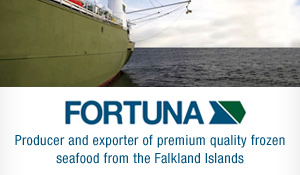MercoPress. South Atlantic News Agency
Tag: Panama Canal
-
Wednesday, May 1st 2024 - 14:30 UTC
Panama Canal Authority to explore desalinization plant's potential
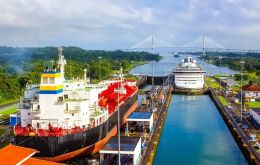
The Panama Canal Authority (ACP) announced Tuesday that a pilot plan to test the viability of implementing a desalination process was to be carried out in a move to keep the century-old structure fully operational while maintaining the quality of water for human consumption.
-
Tuesday, April 16th 2024 - 10:26 UTC
Gradual improvement reported at Panama Canal

Things are looking up for the drought-stricken Panama Canal as new water levels allow an increase in the daily number of ships allowed through the man-made interoceanic corridor. Starting in June, 32 ships will be let through, it was announced Monday.
-
Monday, April 8th 2024 - 19:24 UTC
Panama Canal chokepoint approaching an end as the rainy season begins in May
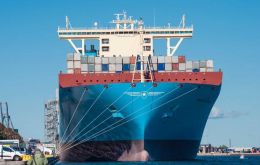
The chokepoint at the Panama Canal could be approaching an end as weather forecasts indicate ample rain fall is heading for Panama, which if correct means many international shipping believe a return to normal crossing s possible in the near future.
-
Wednesday, March 13th 2024 - 09:50 UTC
Weather conditions improving for Panama Canal transit but still far from good
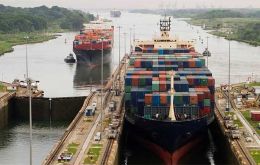
Recent rains have led the Panama Canal Authority (ACP) to announce an increase in the number of vessels through the interoceanic path from 24 to 27 each day, it was reported. Being the only waterway in the world that uses fresh water to link the Atlantic and Pacific oceans, the 80-kilometer Panamanian route carries 6% of the world's maritime trade.
-
Sunday, December 24th 2023 - 15:04 UTC
Interoceanic train launched in Mexico

Mexican President Andrés Manuel López Obrador (AMLO) on Friday inaugurated the new interoceanic railroad through the Isthmus of Tehuantepec, which will cross from the Atlantic to the Pacific and vice versa, and somehow compete with the 80-kilometer Panama Canal, which takes 8 to 10 hours to cross.
-
Monday, November 13th 2023 - 20:54 UTC
Panama Canal shipping queues: Punta Arenas dreams of a re-edition of pre 1914 scenario
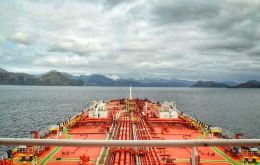
Punta Arenas in the extreme south of Chile and the South American continent is again illusioned with the re edition of pre 1914 times, before the United States finished the Panama Canal and created the state of Panama, significantly cutting the time of shipping wishing to cross from the Pacific to the Caribbean and vice versa, and ensuring safe and reliable links between the East and West coasts of the US.
-
Tuesday, November 7th 2023 - 09:52 UTC
Panama Canal drought emergency, ships booking slots cut to 25 per day and to 18 next February
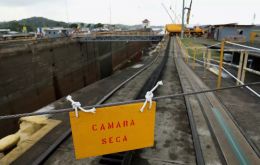
Following on the driest October since at least 1950, the Panama Canal Authority has said it has been forced to cut the number of ships using the waterway. This will naturally have an impact on the cost of shipping goods across the world.
-
Wednesday, November 1st 2023 - 14:32 UTC
Panama Canal further reduces ship crossings as more severe drought hits Lake Gatun

Higher shipping costs as the Panama Canal, one of the world’s main maritime trade routes, will further reduce daily ship crossings in the coming months due to a severe drought, the authorities managing the canal.
-
Tuesday, September 5th 2023 - 10:23 UTC
Panama Canal congestion: “skipping the queue immensely costly”; east South America suffering
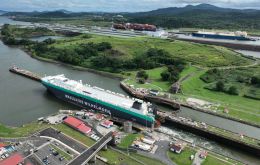
Vessels in queue for transit across the Panama Canal stood at 128 ships on September first, some 42% above the 90 average, but 21% below the figure a month ago. While container ships, which have fixed schedules, tend to have reserved slots, the voyage plans for the tramp trades continue to be hit hard by the ongoing congestion brought about by drought and subsequent draft and transit restrictions put in place by the Panama Canal Authority (ACP).
-
Tuesday, August 29th 2023 - 06:55 UTC
Panama Canal restrictions expected to last for at least ten months; large containers to reroute to Suez Canal
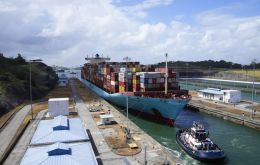
Global shipping has been urged to share transit plans at one of the world’s key maritime crossings following on Panama Canal Authority officials warning that water-conserving restrictions will be in place for at least the next 10 months, given this year's unprecedented drought which Panama is experiencing.
